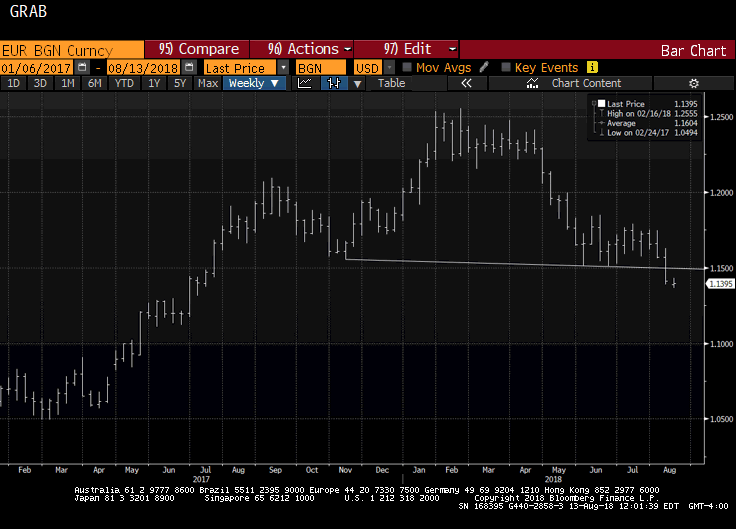The euro appears to have carved out head and shoulder top. As this Great Graphic depicts, the euro was sold through the neckline at the end of last week and is 1% below it today. It is not unusual for the neckline to be retested. It is found near .15. It also dovetails with our near-term caution given that the euro is likely to close below its Bollinger Band for the second consecutive session (~.1440). The left shoulder was formed last August and September with a peak near .21. Last November the euro had recorded a low by .1550 before rallying to a high of a little beyond .2550 by mid-February. The broad sideways trading until late April formed the head. The euro sold off in May and entered a new
Topics:
Marc Chandler considers the following as important: 4) FX Trends, EUR, Featured, Great Graphic, newsletter, USD
This could be interesting, too:
Nachrichten Ticker - www.finanzen.ch writes Die Performance der Kryptowährungen in KW 9: Das hat sich bei Bitcoin, Ether & Co. getan
Nachrichten Ticker - www.finanzen.ch writes Wer verbirgt sich hinter der Ethereum-Technologie?
Martin Hartmann writes Eine Analyse nach den Lehren von Milton Friedman
Marc Chandler writes March 2025 Monthly
| The euro appears to have carved out head and shoulder top. As this Great Graphic depicts, the euro was sold through the neckline at the end of last week and is 1% below it today. It is not unusual for the neckline to be retested. It is found near $1.15. It also dovetails with our near-term caution given that the euro is likely to close below its Bollinger Band for the second consecutive session (~$1.1440).
The left shoulder was formed last August and September with a peak near $1.21. Last November the euro had recorded a low by $1.1550 before rallying to a high of a little beyond $1.2550 by mid-February. The broad sideways trading until late April formed the head. The euro sold off in May and entered a new consolidative range through June and July. This formed what appears to be a right shoulder, even though it is not symmetric with the left shoulder. Still, the $1.1500 neckline offer support until the second half of last week, when the euro broke down. |
Euro BGN Currency |
The important attribute of technical patterns is the measuring objective. An initial target of a head and shoulders pattern can be estimated by rotating the pattern at the neckline. Specifically, the pattern is roughly ten cents–$1.15 to $1.25. Flipping it over provides a $1.05 objective. The euro spent a couple of weeks below there in late 2016 and early 2017, when it appeared to have forged a head and shoulder bottom. The euro has struggled to take out the neckline then until it was clear that the French were going to reject the National Front.
While the measuring objective may be clear, the timeframe is not. It took the smaller head and shoulders bottom the better part of three months to reach its measuring objective. The head and shoulders top we are discussing is roughly twice the size. There are a few support levels to monitor along the way. The $1.1300 area is the first, but also the weakest. A little below $1.12, the 61.8% retracement of the euro’s rally (2017 through mid-Feb 2018) can be found. Next is a band of old congestion around $1.10.
Often the Dollar Index shows similar patterns as the euro. After all, the euro and currencies that move in the euro’s orbit are the largest components. However, this time the head and shoulders bottom is not particularly clear. Yet if we squint the right way, the possible pattern would project toward 102, compared with the 103.80 high from early last year.
Tags: #USD,$EUR,Featured,Great Graphic,newsletter

